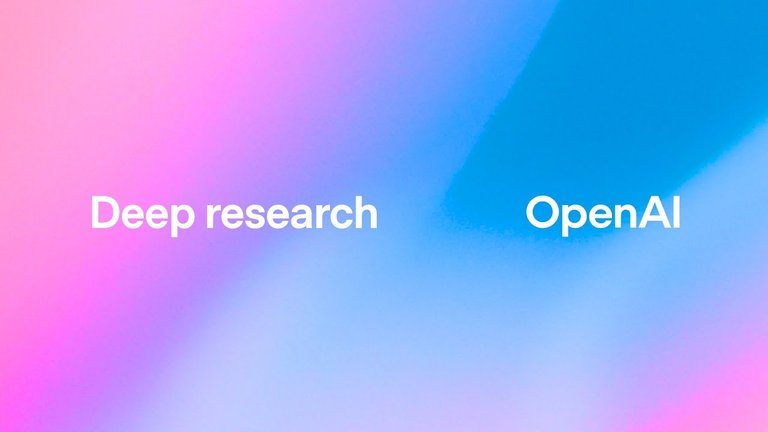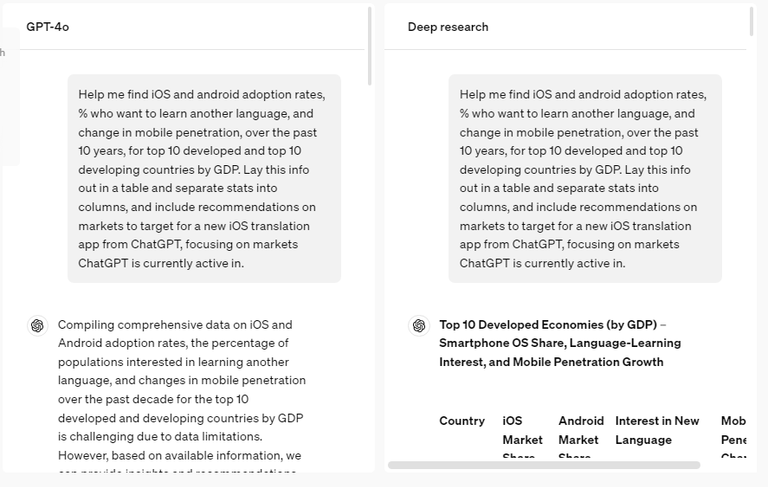KEY FACTS: OpenAI has introduced Deep Research, an AI-powered agent integrated into ChatGPT, designed to autonomously conduct complex research tasks. Leveraging OpenAI's o3 model, Deep Research can analyze vast amounts of online information, synthesize findings, and generate detailed reports within 5 to 30 minutes. Initially available to Pro subscribers in the U.S., it processes text, images, and PDFs, providing citations and summaries for transparency. While promising for professionals in finance, science, and engineering, OpenAI acknowledges its limitations, such as difficulty in verifying information accuracy. Future updates aim to enhance reliability and expand accessibility across platforms.

Source: OpenAI
OpenAI Unveils AI-powered Agent -"Deep Research"
OpenAI has unveiled "deep research," an advanced AI agent designed to conduct comprehensive, multi-step research tasks on the Internet autonomously. This innovative tool leverages the capabilities of OpenAI's latest model, o3, to analyze and synthesize vast amounts of online information, producing detailed reports within minutes—a task that would traditionally require human analysts to spend several hours. Deep Research was announced on February 2, 2025, via openAI's blog post.
Today we’re launching deep research in ChatGPT, a new agentic capability that conducts multi-step research on the internet for complex tasks. It accomplishes in tens of minutes what would take a human many hours...Deep research is OpenAI's next agent that can do work for you independently—you give it a prompt, and ChatGPT will find, analyze, and synthesize hundreds of online sources to create a comprehensive report at the level of a research analyst
Source
Deep research is tailored for professionals engaged in intensive knowledge work across various sectors, including finance, science, policy, and engineering. OpenAI emphasizes that the tool also benefits individuals conducting thorough research before making significant purchases, such as vehicles or appliances. The agent operates by scouring the internet, analyzing vast amounts of data, and compiling its findings into a coherent report complete with citations and a summary of its methodology. The time required to generate a report ranges from five to thirty minutes, depending on the complexity of the query.
Deep research is integrated into the ChatGPT interface, accessible via a dedicated button. Currently, the feature is available to Pro subscribers in the United States, with a usage limit of up to 100 queries per month. This limitation reflects the substantial computational resources required to process each query. The service is powered by OpenAI's latest O3 model, which is optimized for web browsing and data analysis. This model enables it to sift through extensive online sources, including text, images, and PDFs, to deliver comprehensive reports.
The o3 model represents a significant evolution in AI reasoning capabilities. Unlike its predecessors, o3 is designed to devote additional deliberation time when addressing questions that require step-by-step logical reasoning. This approach allows the model to plan and reason through tasks, performing a series of intermediate reasoning steps to arrive at a solution. Such capabilities make it particularly effective in complex domains like science, coding, and mathematics.
Deep research has demonstrated impressive performance in evaluations. Notably, it achieved an accuracy of 26.6% on the Humanity's Last Exam (HLE) benchmark, which comprises 3,000 expert-level questions across more than 100 topics. This score surpasses that of other models, including OpenAI's own GPT-4o model.

Output comparison between GPT-4o and Deep Research. Source: OpenAI
Despite its advanced capabilities, OpenAI acknowledges that deep research has limitations. The agent may occasionally "hallucinate" facts or make incorrect inferences, and it can struggle to distinguish authoritative information from rumors. OpenAI advises users to verify the outputs and not to rely solely on the agent's findings without human oversight.
OpenAI plans to expand access to deep research, with a rollout to mobile and desktop apps expected later in February 2025. The company is also exploring ways to enhance the tool's accuracy and reliability, addressing current limitations to better serve users' needs. As the technology evolves, OpenAI aims to refine deep research into a more robust and trustworthy assistant for complex research tasks.
The introduction of deep research comes amid a competitive season in AI development. Recently, the AI community was stirred by the emergence of DeepSeek, a Chinese AI firm that developed a model performing comparably to ChatGPT at a fraction of the cost. This development has prompted major tech companies, including OpenAI, to accelerate their product releases and innovations.
Information Sources:

If you found the article interesting or helpful, please hit the upvote button, and share for visibility to other hive friends to see. More importantly, drop a comment below. Thank you!
This post was created via INLEO, What is INLEO?
INLEO's mission is to build a sustainable creator economy that is centered around digital ownership, tokenization, and communities. It's Built on Hive, with linkages to BSC, ETH, and Polygon blockchains. The flagship application: Inleo.io allows users and creators to engage & share micro and long-form content on the Hive blockchain while earning cryptocurrency rewards.
Let's Connect
Hive: inleo.io/profile/uyobong/blog
Twitter: https://twitter.com/Uyobong3
Discord: uyobong#5966
Posted Using INLEO